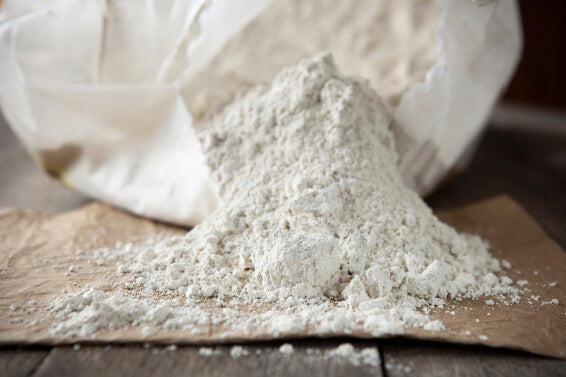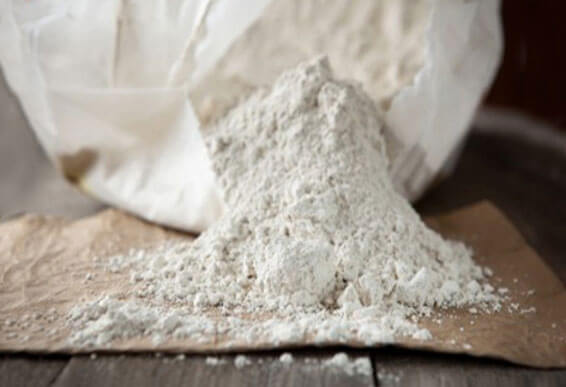
Food Grade Diatomaceous Earth

Food grade diatomaceous earth (DE) is a fantastic way to promote a cleaner and healthier household. It truly is a miracle mineral but there are some things you should be aware of before you use it. Here is our guide to buying, using, and consuming DE.
1. Food Grade vs Non-Food Grade Diatomaceous Earth
First off, not all DE is edible and not all DE is safe to use around your house. Non-food grade DE is used in industrial filtration systems, as an insulation for restaurant grade ovens, and in dynamite; things you wouldn't leave lying around the house.
Industrial grade DE is heated in order to form abrasive crystals in the powder. Non-food grade DE may also have chemical additives to help kill insects faster.
Those crystals are far too small for us to see or feel but if you inhaled them or drank them with a glass of milk, they could do some serious damage to your lungs and body. IT IS NOT FOR CONSUMPTION OR USE IN YOUR HOUSE.
But food grade DE is a different story altogether; the powder is fine enough for you to mix it with food or drink. So, before you click the checkout button or open the container, take a good long look at the description on the label. If you see "food grade", you might be on the right track.
2. Every Breath You Take
While food grade DE is fine for consumption, you should avoid inhaling it. Just like when you are working with other fine powders, you might inhale some or get some in your eyes and experience some irritation. If some DE does get in your eyes, immediately flush with water repeatedly, and if the irritation persists seek medical attention.
If you are concerned about using DE you can mix it with water in a spray bottle to help avoid the chance of inhalation. Use about a ¼ cup of DE to every 3 cups of water. The DE solution won't work in all situations but it still has a wide variety of applications to keep your house bug free and smelling fresh.
3. A Unique Supplement
DE has many health benefits: It can help promote healthy joints and ligaments, a cleaner colon, and removing unwanted chemicals from our digestive systems. To reap all these health promoting benefits, it is not necessary to consume DE with every meal throughout the day, nor should you.
Because DE is highly absorbent, it should be taken with a liquid and on an empty stomach. You could take it mixed with water, but then you can taste it, so we recommend fruit juice, milk, or a Smoothie (I really recommend smoothies, mainly because I love them).
Mix in anywhere from a teaspoon to a heaped tablespoon of DE depending on how much you are planning on drinking. Don't consume food for at least an hour after taking DE. Taking food mitigates DE's effectiveness in promoting a cleaner digestive system.
4. For Fido and Whiskers
Keeping your dog and/or cat (we aren't picking sides in that debate) healthy is a top priority for pet owners. Highly active dogs (Collies, Australian Shepherds), large dogs (Dobermans, Great Danes), and cats over the age of 12 can be particularly susceptible to joint problems like arthritis. Luckily, DE can help promote joint health in animals as well.
By mixing a little DE in your pet's kibble, chow, or feed, you can start them on a healthier path and get rid of some of the kibble smell.
5. Buy From an Approved and Reputable Distributor
As mentioned before, non-food grade DE is designed for specific tasks (filtration, dynamite, chemical insecticides) and is extremely dangerous to your health if not used in accordance with instructions (like trying to eat it).
But there are other issues that surround buying food grade diatomaceous earth. DE providers are not always held to the strictest of standards and smaller companies can often fly under the radar of health and safety regulations. That being said, other DE providers work hard to ensure the highest levels of quality and cleanliness for your health and safety.
Some people are out to get your money, others are out to make the world a greener, healthier, and stronger place. Look at the product's packaging; does it look like it's just in a plastic bag, is it clearly labeled, is there any nutritional information? Be wary of DE that doesn't feature at least some information on the packaging other than the brand and type of DE. A good label is a sign that the distributor is out to provide a safe and high-quality product to you.
